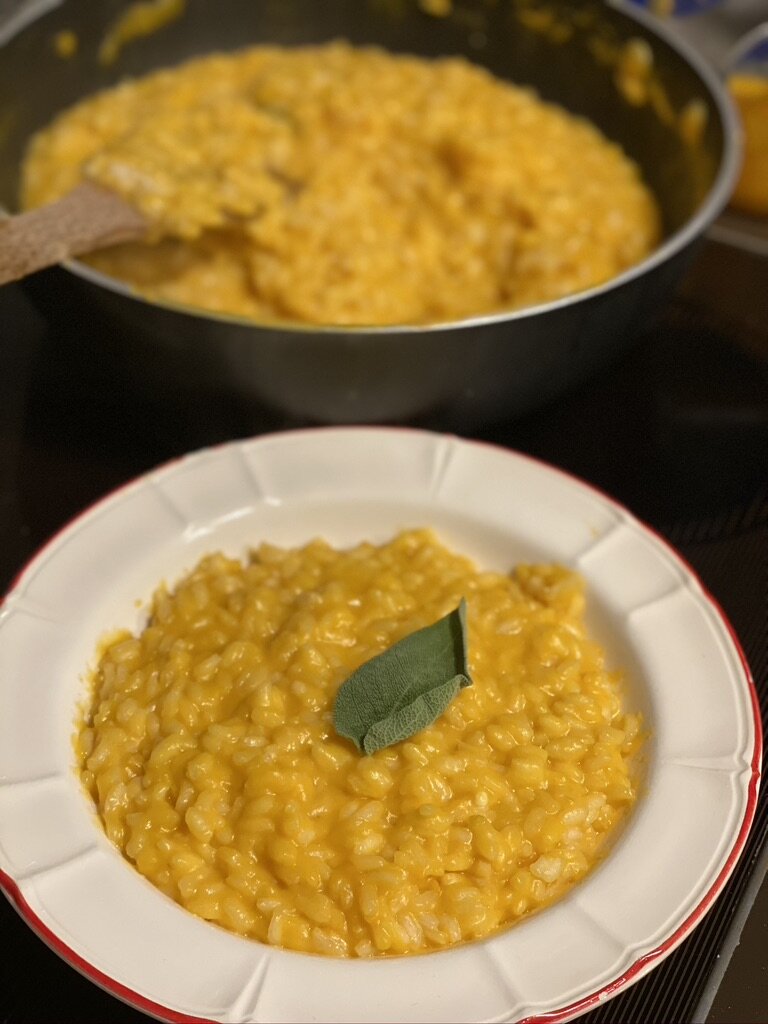Risotto is the ultimate comfort food. Once you get over the initial fears – it’s actually a lot easier to make than most people think – it’s super versatile and always delicious, no matter what stock, vegetables or proteins you have on hand.
The key is the rice. The perfect risotto starts and ends with the right kind of rice. You need to pick one that has a high amylopectin (starch) content, but also will hold up well to the constant stirring. It’s all that stirring that rubs the starch off the surface of the rice, laying the groundwork for the hallmark creamy texture of a good risotto.
You’ve definitely heard of Arborio, but did you know there are quite a few different Italian rices? While most locals would choose pasta over rice any day, the country’s love affair with the grain goes back millennia. The Ancient Romans used rice solely for medicinal purposes, while Sicily first tasted it in the 10th century when Arab rulers began cultivating the fields.
By the 14th century, Cistercian monks were growing rice in Piedmont, inspiring the Duke of Milan, Galeazzo Maria Sforza, to plant his own crops around his city. Today Piedmont and Lombardy remain Italy's main rice-growing regions.
The earliest Italian rice recipes were sweet concoctions flavoured with mutton, raisins, currants and cinnamon, and while the Fascist regime attempted to impose risotto as a national dish throughout the country, the classic risottos we know and love all come from north. In fact, in the old Milanese dialect, risott means "hotchpotch" or "jumble".
Every Italian household has its own favourite type of risotto rice, but we’ve narrowed it down to three for you try at home, along with some tips on which risottos to use them in.
Photo by Elizabeth Jones of Risotto and Steel (we adore her little mini-me!)
Arborio
I guess you could call Arborio the tuna of the Italian risotto rice world. It’s not the gold standard of risotto rice, but it’s the most widely available. It’s a medium-grain rice that can be easy to overcook, and is named after the Piedmont town of Arborio in the Po Valley.
While risotto is typically made with white wine elsewhere, Piedmont is best known for its risotto al Barolo, a robust local red wine made from the Nebbiolo grape. The wine tinges the Arborio a beautiful pink colour, making it perfect for a romantic dinner for two, while infusing the rice with a deep flavour. Sausage or borlotti beans can be added for a more robust variation, and the dish is finished off with plenty of butter and grated parmigiano-reggiano cheese.
Arborio’s intensely creamy texture is also preferred in the Venetian risi e bisi – a spring dish that is made with green peas using the stock from the fresh young pods, flavoured with pancetta.
Carnaroli
Sometimes called the “king of rice” (or “caviar of rice”), Carnaroli is another variety of Italian superfino rice high in amylopectin. It can be even more expensive and difficult to source than Arborio, but each grain maintains its shape better, producing the creamiest risotto.
We use Carnaroli in our risotto ai funghi porcini (porcini mushroom risotto) – a classic vegetarian risotto. The recipe is included in our Fall-themed food box, along with Carnaroli rice and dried porcini mushrooms sourced from the region.
Carnaroli is grown in the Pavia, Novara and Vercelli provinces of northern Italy and is particularly suited to vegetarian risottos because it has a slightly nutty flavour that pairs well with fall and winter vegetables like mushrooms, pumpkin and radicchio trevigiano (a distinctly bitter type of Italian chicory).
It’s also a hallmark in the classic Pavia dish, risotto alla certosina, which is made with peas, mushrooms, freshwater prawns, perch and a common fauna of the rice fields – frogs!
And it’s our pick for risotto alla Milanese, a dish that is thought to have been inspired by the Spanish paella. Simmered slowly with a combination of chicken or vegetable broth, white wine and saffron, and finished with butter, parmesan and the optional addition of bone marrow, this golden rice is Milan’s most celebrated dish.
Photo of a luscious pumpkin risotto by Elizabeth Jones of Risotto and Steel
p.s. want the recipe to this pumpkin risotto? It’s one of the exclusive free recipes included in our weekly newsletter- make sure you’re subscribed HERE
Vialone Nano
A smaller-grained Italian variety of rice usually categorized as fino or semi-fino, Vialone Nano can take on a lot of moisture and triples in size when cooked. It’s grown in the southern parts of the Verona province.
The delicately herbaceous and clean flavour of Vialone Nano makes it a favourite of the coastal Veneto region, where it’s classically paired with fish and seafood like in risotto alle vongole, which is flavoured with clams, white wine, garlic and chili flakes.
Another specialty of the Veneto region, risotto al nero di sepia, is made with cuttlefish cooked with their ink-sacs intact, leaving the risotto an inky black.
As for Italy’s other famous rices - Roma, Baldo, Ribe and Originario? They’re better in soups or sweet dishes such as rice pudding, as they don’t have the creaminess of the ones we just mentioned.
Regardless of what rice you choose, there is one top tip – never rinse. Rinsing eliminates some of the starch and results in a less creamy risotto. Buon appetito!
Hungry yet? Our Fall-themed food box from our Gourmet Club ships 7 Italian culinary specialties, including carnaroli rice from Tuscany’s ONLY organic rice grower and producer. It also includes other delights such as EVOO, dried porcini, truffle salt, artisanal sheep milk Tuscan pecorino cheese and more!
Our Fall-box also includes a printed recipe to make a decadent porcini risotto- order today in time to be apart of your upcoming Thanksgiving dinner!
*All our gourmet boxes are priced and shipped to recipients within the United States and within Europe. Contact us if you have any questions!











